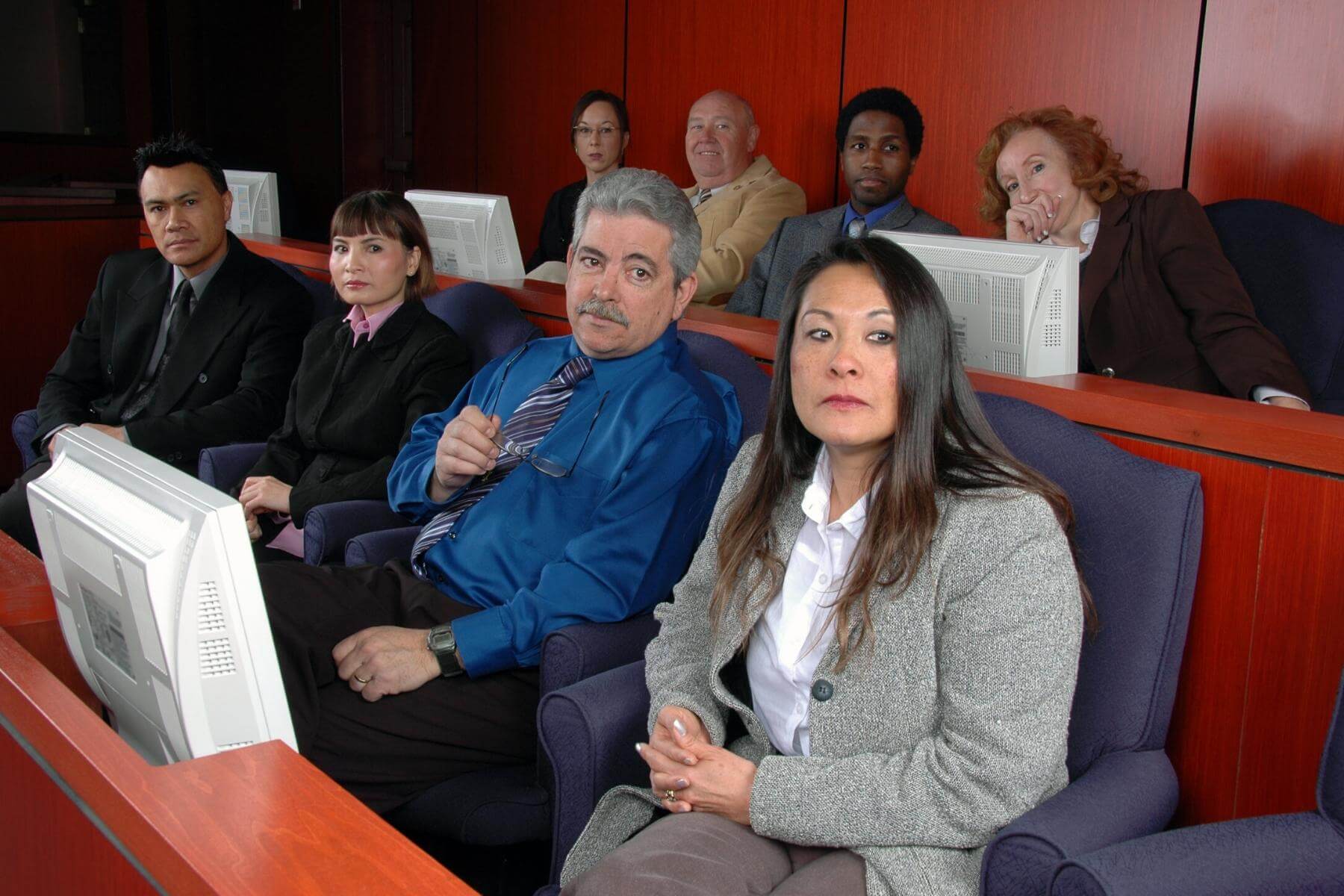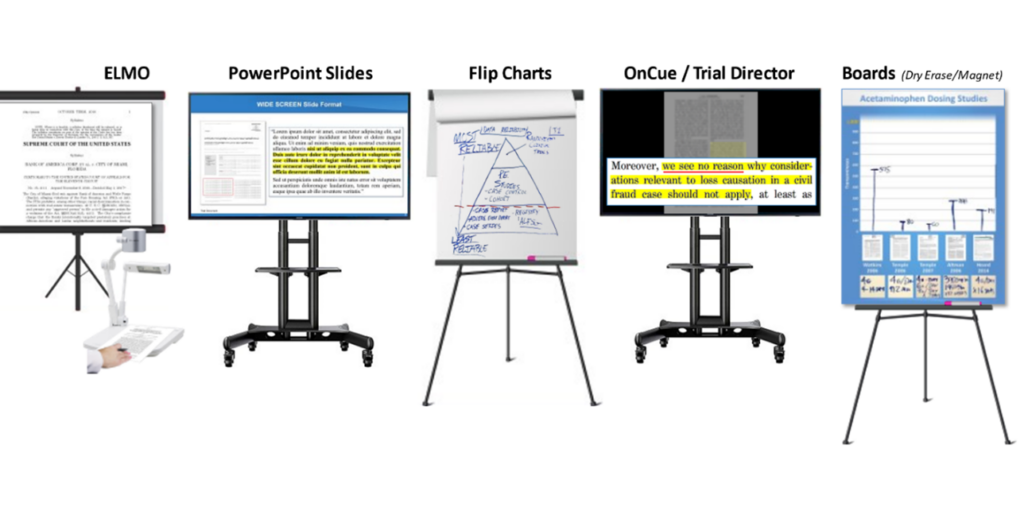Effective advocacy often depends on well-prepared trial presentations designed for impact.
Exactly How Trial Presentations Enhance Your Debate and Convince Jurors
Test presentations offer as a critical device for improving lawful disagreements and persuading jurors. The calculated use of visuals not just clarifies intricate information however also catches jurors' attention a lot more effectively than words alone.

Value of Visual Aids
Aesthetic aids play an essential role in boosting the efficiency of trial discussions, as they can considerably increase target market involvement and retention of info. In the context of a trial, where jurors are entrusted with processing complicated info, visual help serve to streamline and clarify key factors. Charts, charts, and pictures can share data and principles that may or else overwhelm or perplex jurors, enabling for an extra simple understanding of the proof provided.
Moreover, aesthetic aids aid in preserving juror focus throughout the procedures. By damaging the monotony of spoken testament, these tools can stress crucial debates, making them much more unforgettable. Efficient visual aids can also stimulate psychological responses, which can be essential in encouraging jurors to align with the speaker's narrative.

Crafting Compelling Narratives
An engaging narrative is necessary in test discussions, as it functions as the foundation of reliable persuasion. It allows attorneys to weave with each other facts, evidence, and psychological elements into a meaningful tale that reverberates with jurors. This narrative structure allows jurors to comprehend the intricacies of the case while directing them with the lawyer's argument.
To craft a compelling narrative, lawyers need to concentrate on clarity and coherence. This includes developing a clear lead character-- often the client-- and outlining their journey with the occasions in inquiry. Offering the realities in a logical sequence enhances comprehension and maintains interaction. Furthermore, the usage of brilliant summaries can develop psychological photos that aid jurors envision the occasions, making the story extra remarkable.
Additionally, integrating essential themes throughout the presentation enhances the core message and help in retention - trial presentations. The story ought to not only convey details however likewise evoke a feeling of justice, highlighting the risks included. Eventually, a well-constructed story promotes a connection between the jurors and the instance, placing the attorney's argument as both reliable and compelling, therefore boosting the possibility of a favorable judgment

Involving the Jury Psychologically
Efficient court interaction depends upon the attorney's ability to get in touch with jurors on an emotional degree. This connection can dramatically affect jurors' assumptions and their supreme decision-making. Making use of sob stories allows attorneys to humanize the case, transforming abstract legal principles into relatable experiences. By offering real-life stories or testimonies, attorneys can evoke compassion and compassion, promoting a deeper understanding of the issues at risk.
Aesthetic aids, such as photos or video clips, can better enhance emotional involvement, providing jurors with vibrant depictions of the instance's human elements. Crafting a narrative that highlights the struggles and accomplishments of the people included guarantees that jurors see beyond the lawful arguments and go to this web-site recognize the human repercussions of their decisions.
In addition, tone and body movement play an important explanation duty in sharing feeling. A lawyer's passionate delivery can resonate with jurors, reinforcing their emotional investment in the situation. It's important to balance sob stories with valid proof, guaranteeing that jurors feel obliged to act while staying grounded in the truth. Eventually, a mentally engaged jury is more likely to be persuaded, making psychological link an essential part of efficient trial presentations.
Structuring Your Discussion

The body of the presentation need to be rationally segmented right into crucial points, each sustained by compelling proof. It is useful to use narration strategies to weave truths into a narrative that jurors can conveniently follow. Visual help, such as charts and video clips, can enhance understanding and engagement, aiding to highlight important pieces of proof.
Real-World Case Researches
Taking a look at real-world instance studies offers vital understandings right into the art of trial presentations and persuasion. The defense team successfully used an approach that combined high-profile expert statements with multimedia presentations, which mesmerized jurors and eventually affected their choice.
An additional remarkable instance is the "McDonald's Coffee Situation," where the plaintiff's attorneys utilized graphic Recommended Site images of the injuries suffered by Stella Liebeck. trial presentations. This plain aesthetic evidence played a critical duty in sharing the extent of her burns, bring about a significant court honor. Such instances show that impactful test presentations typically depend upon the efficient assimilation of visuals and narration to evoke emotional responses from jurors
Furthermore, the "Casey Anthony Trial" highlighted the relevance of narrative comprehensibility and reputation. The prosecution's failing to develop a compelling timeline diminished their influential power, emphasizing the requirement of a well-structured presentation. Analyzing these instances reveals that effective test presentations call for critical planning, emotional involvement, and the capability to resonate with jurors' worths and ideas.
Conclusion
Test presentations dramatically enhance debates and persuade jurors with the critical use of aesthetic aids, compelling stories, and psychological interaction. A well-structured discussion balances psychological allures with factual evidence, inevitably resonating with jurors' values.